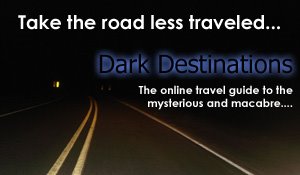
In July 1967, a group of filmmakers descended on a cemetery in rural Pennsylvania to film the opening scene of their small independent horror film. The film involved a group of survivors trying to find refuge as the dead inexplicably became reanimated and sought to devour living human flesh. The small film was George A. Romero’s Night of the Living Dead and it is considered one of the greatest (and most important) horror films of all time. Its success and cult following has also transformed Evans City Cemetery into a must-see tourism spot for fans interested in seeing where it all began.
In the fictional world, the cemetery in essence ushered in a zombie apocalypse that resulted in several sequels and countless imitations – spawning the flesh-devouring sub-genre of zombie horror films. Evans City Cemetery is still overly recognizable as that virtual “ground zero” of the dead rising from the grave… mostly. Some visitors to the grounds might not know that the cemetery was the site of true chaos and destruction a couple of decades following the film’s release – courtesy of Mother Nature. On May 31, 1985, a tornado touched down on the cemetery grounds and wiped out trees, shrubbery, a mausoleum, and displaced 361 gravestones. It was only one of many tornadoes that struck the state of Pennsylvania (and surrounding states) that day, which caused mass destruction and took the lives of 69 people.
-Casey H.







